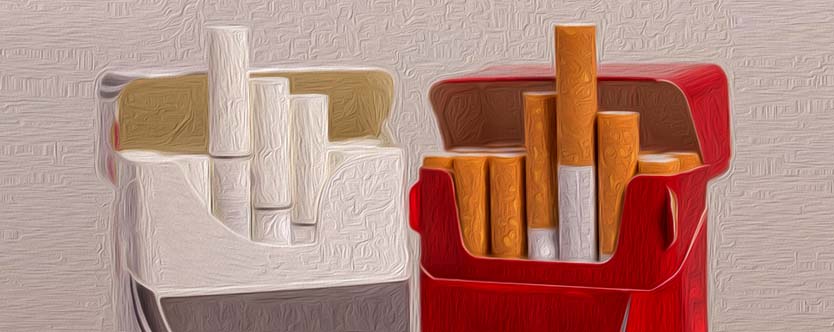What’s in your cigarette?
The cigarette smoke contains as much as 4000 chemicals; popular among them being nicotine, tar, formaldehyde,
[the_ad id=”6085″]hydrogen cyanide, ammonia, arsenic, cadmium, nickel, benzene, and DDT. At least 43 different types of cancer-causing substances are found in tobacco containing products. The news agencies in India have reported, “Smoking kills over one million people in India annually”.
What was the need for cigarettes with filters?
In early days, cigarettes were as cheap as a candy bar. In the early 1960s, nearly half of all adults in America used to smoke and the cigarette business was at its peak. The result was the rising incidence of tobacco-related cancers. The cigarette manufacturers and brands responded to this increasing trend of tobacco-related cancers, by adding filters to the cigarettes. Not to mention, with the help of great marketing gimmicks, the brands projected cigarettes as “safe” and “harmless”.
What is the filter in the cigarette?
A cigarette filter is made from plastic which is cellulose acetate, papers, adhesive and rayon. The thin cellulose forms cotton like structure and is present in the cigarette with the function of reducing the amount of smoke and tar inhaled during the smoking. Over the years, the brands continued to market more new products laced with nicotine. Although there was a phase of genuine optimism among cigarette smokers, the efficacy of cigarette filters remains a question. They are incapable of filtering out toxins like carbon monoxide. Even the light and low tar cigarettes are not safer alternatives to traditional cigarettes.
Does the cigarette filter work? Do they reduce the harm caused by the carcinogens?
Cigarette smokers crave for the satisfaction and the kick they get from the cigarette smoke. It is a well-known fact that the highly addictive Nicotine is responsible for providing “the kick”. When a person smokes a filtered cigarette, he may be inhaling fewer chemicals and tar the first time. But if the smokers do not get enough of the nicotine, they reach out for smoking another cigarette. Thus the smokers when smoke light cigarettes, actually compensate by taking deeper and more frequent puffs. Thus ending up smoking more nicotine than a non-filtered conventional cigarette smoker.
A very less known fact is that smoke-related deaths account for up to 30% of the cancer deaths. However, the other major health hazards include heart diseases and emphysema.
Why don’t they work?
It has been argued that the filtered cigarettes mostly block out the large tar particles but letting in the small particles of tar inside the lungs. These small particles are more efficient to travel through the deep inhalations. When using a filter, the smoke feels lighter on the throat, which enables the smoker to take in deeper puffs.
As misleading it can get, filtered cigarettes will not stop you from getting sick. Even worse, you may be inhaling some of that tiny filter fibre material too.
The only way to stop the health hazards of smoking is to stop smoking cigarettes and all other tobacco products. Looking out for products which are a healthy alternative to smoking is not of much help unless you decide to quit, as most of the chemicals contained in a cigarette are found to be absorbed by the lungs as they are inhaled, and they stay there.
Though nicotine makes you feel better with each of the puff you inhale, it continues to damage each cell of yours!!
Source:

